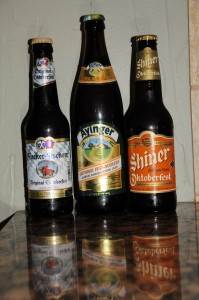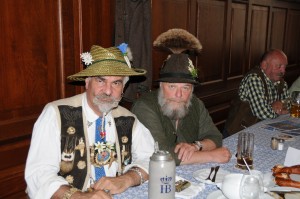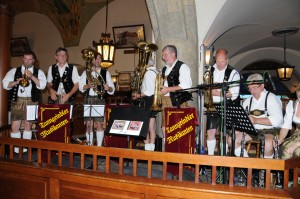Today was the final day of Munich’s Oktoberfest, bringing the 200th anniversary festivities to a close after weeks of celebration. While they are bidding a fond farewell in Germany, in the US there are a few ongoing celebrations here and there, and to honor those I plan to explore German food a bit more in depth for the month of October.
I had intended to make homemade sourdough pretzels last week – one of the traditional food offerings at Oktoberfest each year. However, my sourdough starter (which should have been ready by the middle of last week) has been giving me a bit of trouble. At one point I truly thought it had died, but after a few extra feedings it began to revive. It seems to be quite bubbly now…thus my starter has been dubbed “Elvis”…no, Elvis has NOT left the building!!!
This brings us to tomorrow: ‘Pretzel Day’…I have ‘Elvis’, some barley malt syrup and the few other remaining ingredients needed to venture forth. The recipe I am using is a two-day process, so I really won’t know until Wednesday how it all comes together. It involves mixing, resting, shaping, another loooonnnng rest (12-24 hours), dipping and finally, baking. (And then hopefully: eating!)
So let’s raise one of those remaining steins of Marzen to pretzels…Keep those fingers crossed they turn out well, and I will keep all of you posted on the outcome – good or bad. “Thankya, thankya very much!!” for your patience and support!
**Note for those interested: the sourdough starter recipe I am using comes from Nancy Silverton’s “Breads from the La Brea Bakery”, and the pretzel recipe is from that same cookbook. I have made this starter with no problem several times in the past…I’m not sure what was different this time, but it does appear as if it has made a recovery. I will know for sure tomorrow…






